What does that even mean?
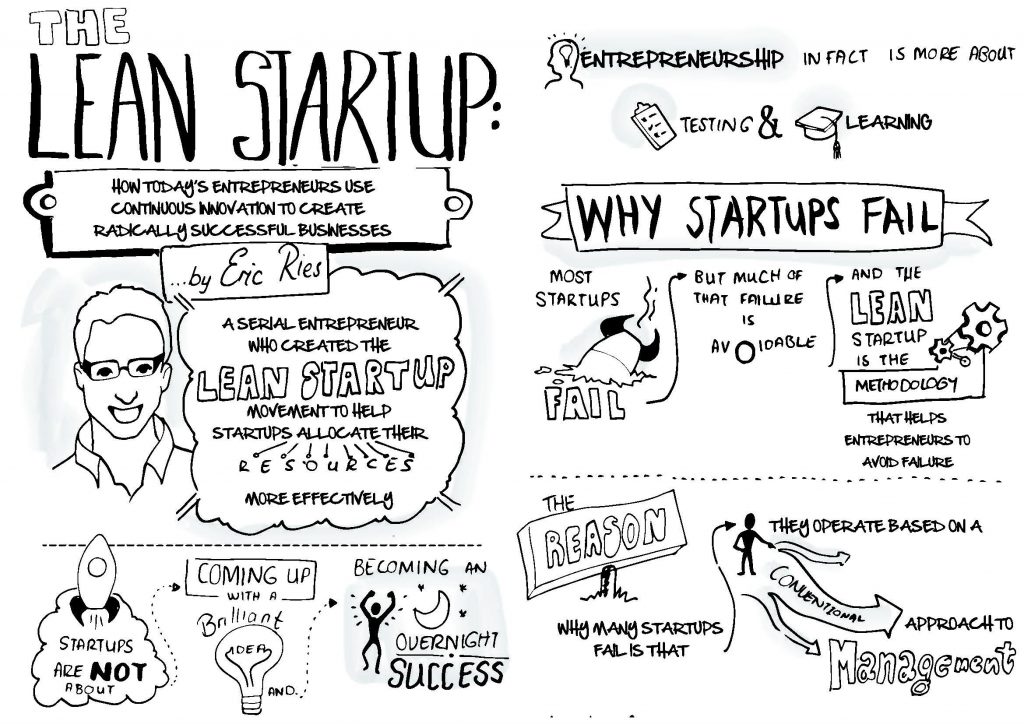
This class has exposed us to a lot of new and old entrepreneurs and innovators. It is pretty clear that things simply don’t work the same as they used to. Technology has changed the way that humans interact with the world. Everyone is forced to think about problems differently and create solutions in a way more creative and innovative manner. If you were thinking of starting a business in the past, there was a pretty set plan to at least build the foundation. In this era, you would spend time figuring out a pain point for customers, create a product, and then begin to sell the finished product on the marketplace. If it worked, great. If it didn’t work, you go ahead and repeat the process over and over again until it worked. I am not the one to say that this was not a good system, but one thing that I can say in retrospect is that it is very inefficient. If a company was to release a product and realize that no one likes it, then they wasted time, money, and resources. Small businesses do not have they means necessary to do this as cashflow is the most important thing that they want to acquire. That was until a man by the name of Eric Ries developed a methodology to attack this problem. It was this man who created the infamous Lean Startup Method.
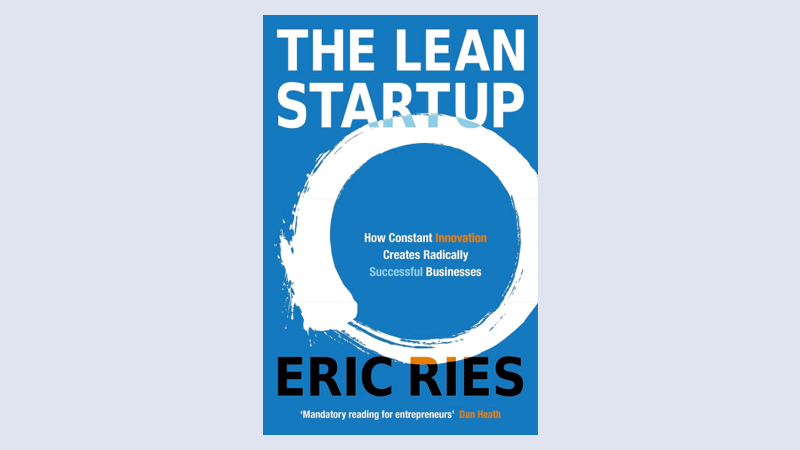
The textbook definition would be that The lean startup methodology is a method of managing and building a business or startup by experimenting, testing, and iterating while developing products based on findings from your tests and feedback. The whole process is based around a Minimum Viable Product (MVP), which is essentially the prototype for a product.
CEO’s and MVP’s
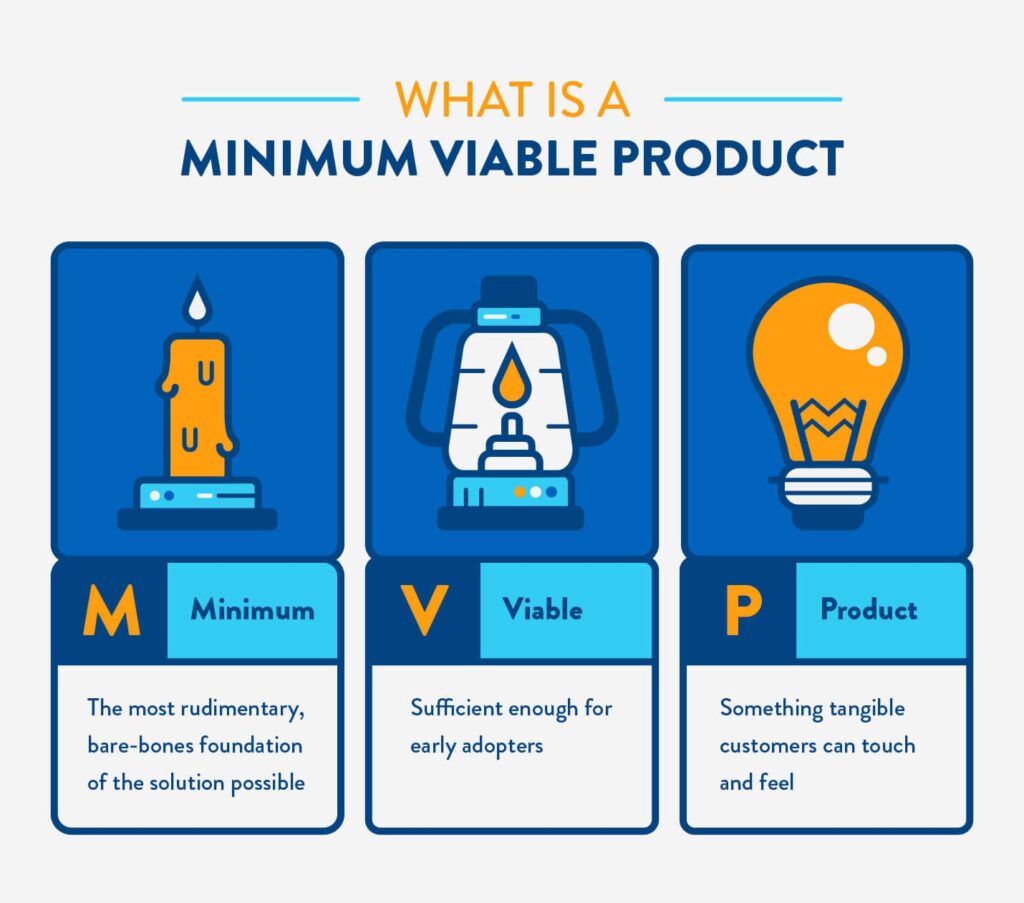
If you think of any aspiring or seasoned entrepreneur in Silicon Valley, I am almost positive that they would argue that MVP’s are the name of the game in their space.
Who is the real MVP?
A minimum viable product is the simplest version of a product that can still solve a problem or address a need. The purpose of an MVP is to test the assumptions and hypotheses about a product or business idea in the real world, while minimizing the amount of time, money, and resources invested. To be clear, MVP’s allow companies to release an initial version of their product and gather feedback in rapid time. This works because there are always people who see themselves as innovators and thought leaders. Often what comes with this territory is being the first cohort of individuals to try something and give their opinions about it. Without having to worry about media and popular opinion, companies are able to get real and authentic feedback about whatever product that they are hoping to put out. Additionally, MVP’s allow for a faster time to market for many of the products as it allows for companies to get past the initial testing stage in a much faster time.
Build, Measure, Learn
The lean startup method can really be broken down into a couple succinct parts to make it a pretty cyclical process. Although, the three pillars of foundation include the terms Build, Measure, and Learn.
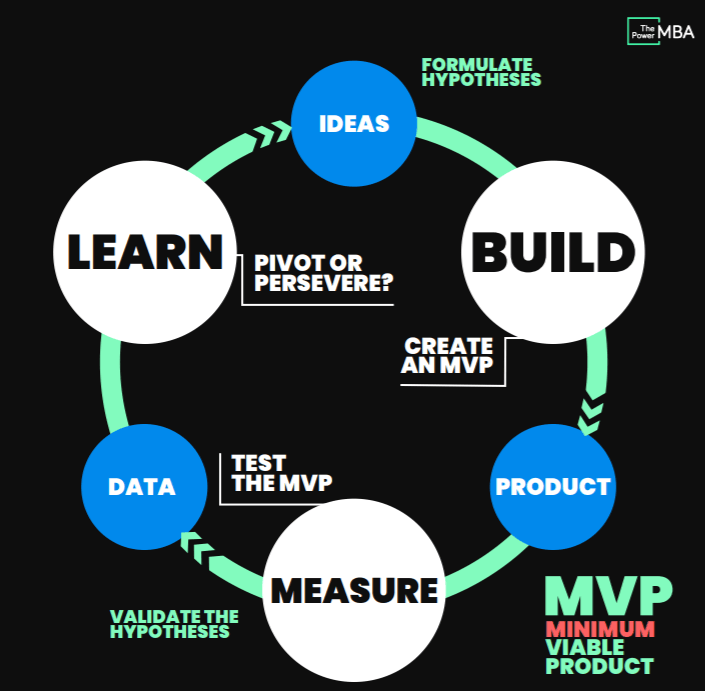
Build
In the Build stage, a company will first create their MVP/prototype and then test it. While it is in the process of being tested, it would be funneled into the system of iterating and refining it down to a good product that would be deemed ready for a large market test. The final step of the build stage is to test the product in a larger market to gather more feedback and validate the assumptions made in the initial hypothesis.
Measure
The measure stage of the lean startup method is when the company takes a further step into the data and looks at that the feedback and results that were gathered to determine whether it was valid or not. The company will usually define metrics first, and these metrics will be used to determine/measure the success of the product. After they define the metrics is when they go ahead and collect as well as analyze the data where they will begin to look at any patterns or trends in the data. Throughout this stage, the company is focused on using data and feedback to make more data-driven decisions about the future direction of the product. I know, confusing right?
Learn
The last stage of this process is the learn stage. This is where a lot of the decision making takes places because it is here where the innovators, or the customers in a sense, determine if the products sink, swims, or continues to barely float. Of course the first step in this process would be to review and reflect upon the process, data, and feedback. The next step would be to identify opportunities for growth in this area, and whether that comes in attracting to new customers or retaining customers is up to the company. From here, the company really decides if their product is ready for the market.
The Proof is in the Pudding
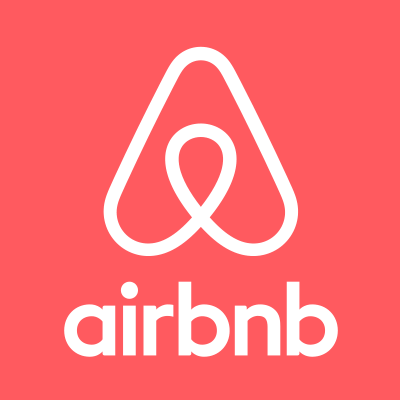
One of the top companies in the world to use an example is AirBnB. AirBNB was founded in 2008 as a pretty easy to navigate website that allowed people to list extra rooms or properties for rent. This website essentially acted as their minimum viable product. They tested this with a small group of thought leaders/ influencers and used their feedback to help better their product. One of the most essential things that they used as a foundational pillar pf their success was their high degree of focus on customer feedback. They genuinely listened to their customers and used their feedback of areas of improvement to their company and platform. They then went ahead and began to tinker and redesign their platform using a hand full of different marketing techniques and approaches. AirBnB has continued to use customer feedback as a key indicator to make informed decisions for the future of their company.
Hey Kevin, this was a really informative post! I’ve been learning about lean methodology in some of my other MIS classes, but it’s nice to hear about it from a student’s perspective. I didn’t understand how efficient and commonly used this all was until I talked to my older sister. She also graduated with an MIS degree, and she tells me about how she uses this stuff in her day-to-day work all the time. Also, the Build, Measure, and Learn diagram and explanations are new to me, but they sound very important.
Hi Kevin, I appreciate your different approach to these blog posts. This is still an entrepreneurship class as well as an AI immersion one. I believe it is important for us as a class to understand the basics of entrepreneurship but also the innovations within. In an extremely competitive market, it is important to also save on costs… the way this can be ensured is by using MVP. Use user feedback for iterations to determine KPIs and points of focus. Airbnb is a great example as feedback from users is so readily available. I am curious if you can add this to an industry where feedback is not as available.
Great post Kevin! The concept of lean startup is very prevalent in businesses today and it seems to go hand in hand with agile and design thinking methodologies. Most of these concepts incorporate an MVP and a process of quick iteration to continually improve off of tested designs. I wonder how this product progression works within different industries and if it is more effective in a specific sector?
Hello Kevin! This was a great post. I liked how you talked about how starting a business in the past was different than starting one now. I wasn’t aware of the lean startup method before so it’s good to now know what it takes to start a business with a minimum viable product.
Hello Kevin. It was nice that you used airbnb as an example, as I did not know this was the start of the company. We hear a lot in our classes about lean methods and how they are effective in management, but I still have a hard time visualizing it and seeing it in use.
Hi Kevin, this was a great post! This was a topic that individuals should be informed on. As times progress, there are various ways to create companies and startups seem to be a model that many take on. I’ve seen my fair share of minimum viable products and some of done well while others haven’t, one advantage that I would say that I have seen is that companies are able to scale the product depending on demand which is a fact that we actually covered in class when talking about startups. The Lean Startup method is intriguing and I’ll be doing my own research upon reading this post.
Great post! . I remember theres a great episode in Silicon Valley called “MVP” that explains the minimum viable product in a good way. I’m curious about how this approach to product development operates across different industries and whether it’s more successful in certain industries.